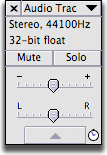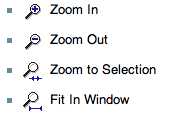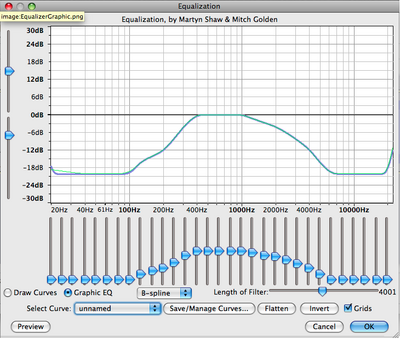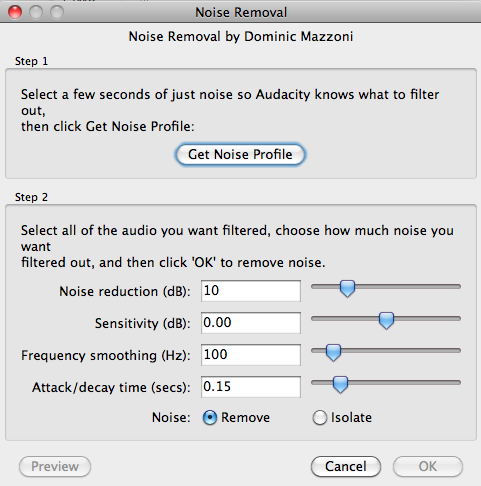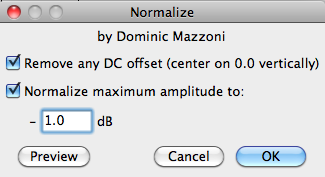Audacity Tutorial
Getting Started
Open Audacity found in the applications folder.
Save your project
(preferrably after every edit) File > Save navigate to your hard drive and create a project folder. This folder will contain all your audio files and edit information so you.
Inside your folder there will be the Audacity project file with a .aup extension and a folder ending with _data.
For example, inside the folder called interview if the project was named October there would be a file called October.aup and a folder called October_data.
Always keep the project file and data folder together.
Importing audio
File > Import > Audio navigate to the audio files that you want to import.
If Audacity opens a warning screen click the option that says "Make a copy of the files before editing (Safer)" and click OK.
Tools
Transport Toolbar
- controls playback and recording
Tools Toolbar
- chooses various tools for selection, volume adjustment, zooming, time-shifting of audio and a multi-function tool
Meter Toolbar
- displays levels for playback and recording
Mixer Toolbar
- controls the mixer settings of the sound card
Transcription Toolbar
- plays audio at a slower or faster speed, affecting the pitch
Edit Toolbar
- cut, copy, paste, trim, silence, undo, redo, sync-lock, zoom
Tracks
Adding Tracks
Tracks > Add new > Audio track, Stereo track, Label track, or Time track
Mono track
-this is one audio file recorded with one microphone

Stereo track
-this is one audio file with a left and right track recorded with a stereo microphone. Stereo tracks can be split into two mono tracks.

Label track
-this track allows you to add markers or regional markers to the whole project or individual tracks
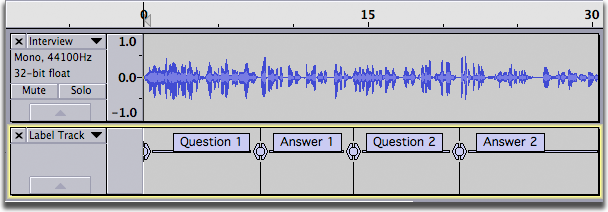
Track Control Panel
-allows you to rename the track, provides sample information, mute or solo the track, increase volume and pan left-right function.
Editing
Playback
Listen to your project hit the spacebar on your keyboard to Stop or Play
Zooming
Zooming In/Out helps you make accurate selections of your waveform.
Selection Tool
Highlight a portion of audio using your Selection Tool
![]()
Labeling Tracks
Label tracks and take notes of your project Listen to your audio and make labels.
- Go to Tracks > Add New > Label Tracks
- Tracks > Add Label at Selection
- Name your label.
- Use Tab on your keyboard to select forwards to the next label, and SHIFT+Tab to select backwards to the previous label.
Editing Audio
- Open a blank track - this will be your working pallet.
- Tracks > Mono track or Stereo Track
- Choose the Selection tool
 in the Tools Toolbar.
in the Tools Toolbar. - Highlight your audio then Edit menu > copy
- Select a point in your empty track then Edit menu > paste
Effects
Equalization
Allows you to increase or decrease desired frequencies.
Noise Removal
Removes unwanted background noise.
Normalize
Increases the overall volume of your waveform equally.
Envelope
Let's you control a tracks volume changes smoothly over time.

- Select the envelope tool.
- Click a beginning, end, and middle point on your audio waveform.
- Click and hold on a point to increase or decrease the volume.
Exporting
File > Export this command exports the entire project except muted tracks. File > Export Selection this command exports only selected tracks.
Format:
Select .wav for a high quality uncompressed file but bigger file size.
Select .mp3 for a lower quality, compressed, but small file size.




